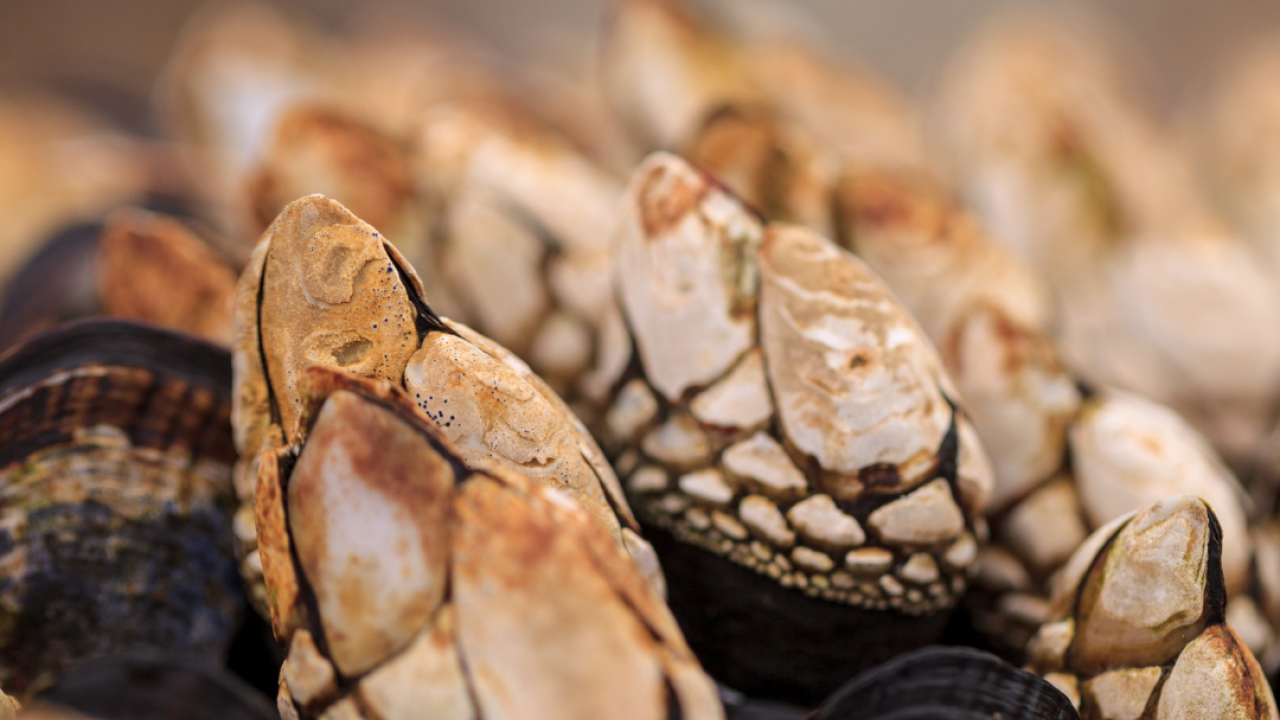
How to Grow the Best Tasting … Barnacles?
A Santa Rosa Junior College - Bodega Marine Laboratory Internship Program Story
I am Kevin Witt, a second-year intern in the SRJC-BML program who has just finished his third year at Santa Rosa Junior College with a series of associate degrees in various scientific disciplines. I will be beginning at Sonoma State in the fall of 2023 as a Junior. I will be studying for a double major in Biochemistry and Geology. After completing my bachelor’s degrees, I hope to pursue a PhD in conservation science, preferably through Davis studying here at BML.
This summer I have been helping to prepare an experiment to study the feasibility of using aquaculture to grow gooseneck barnacles. Gooseneck barnacles are filter feeders that live in the rocky intertidal. They grow on a meaty stalk unlike the more widely known volcano style of barnacles. In general, gooseneck barnacles belong to the infraclass Throacia, however for this experiment we are specifically interested in those of the genus Pollicipes. They tend to grow in colonies or groups due to a process known as gregarious aggregation. This means that when a larva is ready to leave the water column and fuse onto a substrate, it generally seeks out an adult of the same species to cement itself onto. It is common for an adult gooseneck barnacle to have many larvae settle onto it.

These barnacles are a delicacy in many parts of the world, especially Spain and Portugal. They are the most expensive seafood on the market right now. Their meat can fetch a price of over 100 dollars a pound. Due to the high value of the meat, and the complicated life history of these individuals, they are extremely vulnerable to overharvesting. Traditionally gooseneck barnacles have been collected by free divers, who will harvest multiple entire colonies of them at once. The main problem with this of course is that if an entire colony is harvested, there are no longer any adults left at that location for the larvae to settle on. Since they immensely prefer to land on adults of the same species, this means that most of the larvae do not, in fact, settle at all and die off in the water column. Also, they share a range with many other intertidal mollusks such as muscles. When a colony of barnacles is completely removed it is not uncommon for these other animals to overrun their former locations before new gooseneck barnacles can reestablish a foothold there.
In order to combat this vulnerability, we are looking into the feasibility of growing Pollicipes under controlled conditions. Since they are filter feeders, they need to be grown in moving water. We are using three existing upwellers in the red abalone lab to test three separate high-protein diets, a classic fish food diet using tropical fish flakes, a diet of fly larvae, and a diet tailored to grow shrimp. We are suspending several baskets of barnacles in a column in each upweller. There will be an air stone at the bottom of each column both for aeration and to aid in the uplifting of the food. The experiment will run for six months. We will count the number of individuals in each colony and weigh the colonies at the beginning and end of the experiment as well as measuring the change in size of several marked individuals of each group. We will count the number of dead individuals in each group on a weekly basis. As we are still at the beginning phase of this experiment, we obviously have no data at this point. The results of this experiment will be used to inform future experiments
About the Program:
The SRJC-BML Internship Program provides summer research opportunities for Santa Rosa Junior College students at the Bodega Marine Laboratory.
